
Separations
metrics 2024
Exploring New Horizons in Filtration and Separation
Introduction
Separations is a prestigious open-access journal published by MDPI, dedicated to advancing the fields of analytical chemistry and filtration and separation processes. Established in 2014, the journal has swiftly emerged as a significant platform for disseminating groundbreaking research and innovative methodologies in separation science, boasting an impressive E-ISSN of 2297-8739 and operating out of Basel, Switzerland. With its focus rotating from 2016 through 2024, Separations has been categorized in the Q3 quartile for both analytical chemistry and filtration and separation disciplines as of 2023, demonstrating its relevance in these scientific areas. The journal's rankings in Scopus, with 93rd out of 156 in analytical chemistry and 15th out of 19 in chemical engineering filtration and separation, reflect its commitment to high-quality research accessible to a global audience. Researchers, professionals, and students will find valuable insights and pioneering findings that foster collaboration and innovation within the vibrant community of separation science.
Metrics 2024
 -
- 2.50
2.50 2.60
2.60 -
-Metrics History
Rank 2024
IF (Web Of Science)
JCI (Web Of Science)
Quartile History
Similar Journals
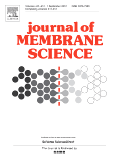
JOURNAL OF MEMBRANE SCIENCE
Unleashing Breakthroughs in Separation ProcessesJOURNAL OF MEMBRANE SCIENCE, published by Elsevier, is a premier academic journal dedicated to advancing the field of membrane technology and its applications in various scientific domains. With its ISSN 0376-7388 and E-ISSN 1873-3123, this journal is recognized for its significant contributions to the study of filtration, separation processes, and materials science. As of 2023, it boasts an outstanding impact factor, ranking in the Q1 quartile across several categories including Biochemistry, Filtration and Separation, and Physical and Theoretical Chemistry, making it a leading resource in these fields. Researchers benefit from its rigorous peer-review process and the inclusion of breakthrough research, critical reviews, and cutting-edge developments. With converged years spanning from 1976 to 2025, the JOURNAL OF MEMBRANE SCIENCE stands out as an essential platform for professionals, students, and academics eager to explore innovative solutions and findings in membrane science. Although it operates under a traditional access model, its wealth of knowledge and global reach ensure that it remains an indispensable asset for anyone engaged in this dynamic area of study.

Acta Chemica Iasi
Pioneering New Frontiers in Chemical InquiryActa Chemica Iasi is a distinguished open-access journal dedicated to advancing the field of chemistry, published by the esteemed ALEXANDRU IOAN CUZA UNIVERSITY PRESS located in Iasi, Romania. Since its inception, this journal has served as a vital platform for the dissemination of significant research findings, theoretical advancements, and methodological innovations in various chemistry disciplines. As an open-access publication since 2013, it provides unrestricted access to high-quality articles, fostering collaboration and knowledge sharing among researchers, professionals, and students globally. Although specific metrics such as H-Index and Scopus rankings may be forthcoming, the journal's commitment to rigor and excellence ensures that it remains an invaluable resource for those seeking to stay at the forefront of chemical research. With a focus on promoting scientific inquiry and innovation, Acta Chemica Iasi continues to uphold a legacy of scholarly excellence and contribution to the chemical sciences.
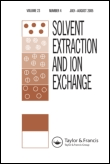
SOLVENT EXTRACTION AND ION EXCHANGE
Fostering Collaboration in Chemical Engineering ExcellenceSOLVENT EXTRACTION AND ION EXCHANGE is a prominent academic journal dedicated to the field of Chemical Engineering and Chemistry, published by Taylor & Francis Inc. With its ISSN 0736-6299 and E-ISSN 1532-2262, the journal serves as a vital resource for researchers and practitioners seeking to advance their understanding and application of solvent extraction and ion exchange methodologies. Recognized for its impact, the journal holds respectable rankings, placed in Q2 for Chemical Engineering and Q3 for Chemistry as of 2023, reflecting its significant contribution to the academic community. The journal covers a wide range of topics from fundamental studies to innovative applications, enhancing both theoretical perspectives and practical implementations. With a robust readership spanning across the globe, SOLVENT EXTRACTION AND ION EXCHANGE not only facilitates the dissemination of critical research findings but also encourages interdisciplinary collaboration and knowledge sharing among scientists, engineers, and students alike. Researchers are invited to contribute to this esteemed journal, which works to illuminate the evolving landscape of chemical processing and separation technologies.
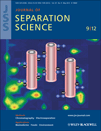
JOURNAL OF SEPARATION SCIENCE
Advancing the Frontiers of Separation ScienceJOURNAL OF SEPARATION SCIENCE, published by WILEY-V C H VERLAG GMBH in Germany, is a premier platform dedicated to the advancement of knowledge in the fields of analytical chemistry and filtration and separation technologies. With an impact factor that reflects its strong influence—ranking #42 in Analytical Chemistry and #8 in Filtration and Separation—the journal strives to disseminate high-quality research findings from both academia and industry. The journal has established a significant readership, evidenced by its Scopus rankings, and is indexed under ISSN 1615-9306 and E-ISSN 1615-9314. As part of its commitment to accessibility, the journal provides open access options, enabling broader dissemination of innovative research. Since its convergence in 2000 and continuing through 2024, JOURNAL OF SEPARATION SCIENCE has become essential for researchers, professionals, and students aiming to stay at the forefront of separation science methodologies and applications, thereby actively influencing advancements in both theoretical knowledge and practical implementations.
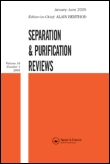
SEPARATION AND PURIFICATION REVIEWS
Illuminating Pathways in Separation and FiltrationSEPARATION AND PURIFICATION REVIEWS, published by Taylor & Francis Inc, stands as a leading journal in the fields of Analytical Chemistry and Filtration and Separation, consistently recognized for its high impact and scholarly contributions. With an impressive impact factor reflected in its Q1 and Q2 quartile rankings, this journal serves as an essential platform for researchers, professionals, and students seeking to advance their knowledge and understanding of innovative methodologies in separation science. Covering a broad scope from 1972 to 1995 and from 2003 to 2024, the journal features peer-reviewed articles that influence critical advancements in chemical engineering and analytical techniques. SEPARATION AND PURIFICATION REVIEWS not only fosters collaboration among academics but also encourages discussions surrounding current challenges and innovations in separation processes. With its commitment to providing open access options, this journal ensures that essential findings are readily available to a global audience, thus driving forward the frontiers of separation science.
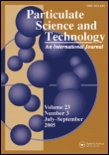
PARTICULATE SCIENCE AND TECHNOLOGY
Transforming Understanding of Chemical EngineeringParticulate Science and Technology is a distinguished journal published by Taylor & Francis Inc, dedicated to advancing the understanding and application of particulate materials across various scientific fields. Serving the international community since 1983, this journal features original research, reviews, and technical notes that address key developments in chemical engineering, particularly focusing on the generation, processing, and application of particulate matter. With an impact factor that reflects its significant contributions within the discipline (Ranked Q2 in Chemical Engineering), the journal provides a vital platform for researchers, professionals, and students seeking to enhance their knowledge and influence in the field. While not currently open access, Particulate Science and Technology is committed to disseminating high-quality research that stimulates innovation and fosters collaboration amongst experts worldwide. For those invested in the advancement of chemical engineering principles, this journal is an invaluable resource.
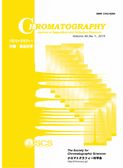
Chromatography
Unveiling breakthroughs in chromatography for a sustainable future.Chromatography is an esteemed journal published by the SOC CHROMATOGRAPHIC SCIENCES, dedicated to advancing the field of chromatographic techniques and their applications across various disciplines, including analytical chemistry, biochemistry, and environmental science. By facilitating the exchange of high-quality research, Chromatography plays a pivotal role in enhancing methodologies and technologies that drive innovation in sample analysis. While the journal is not currently open access, it maintains a rigorous peer-review process, ensuring the publication of valuable and impactful studies. Researchers, professionals, and students alike can benefit from its comprehensive coverage of chromatography-related advancements, making it a vital resource for anyone engaged in this dynamic area of study.
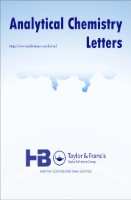
Analytical Chemistry Letters
Driving Progress in Analytical Chemistry and BeyondAnalytical Chemistry Letters is a notable journal published by Taylor & Francis Ltd, focusing on the interdisciplinary aspects of analytical chemistry and its applications across various fields, including materials science and forensic medicine. With an ISSN of 2229-7928 and an E-ISSN of 2230-7532, this journal provides researchers and professionals a platform to share their findings from 2011 to 2024, fostering advancements in methodologies and technologies. Despite being classified in the Q3 and Q4 category quartiles across multiple disciplines, the journal is crucial for emerging studies and discussions, particularly in the context of innovative analytical techniques and their relevance to real-world challenges. While currently not an open-access journal, its rigorous peer-review process ensures high-quality contributions that are essential for academics, professionals, and students keen on bridging theory and practice. The journal continues to build its reputation, reflected in its Scopus rankings which place it amidst a competitive landscape, encouraging growth and collaboration within the scientific community.
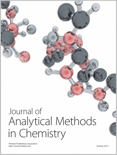
Journal of Analytical Methods in Chemistry
Pioneering research in the realm of analytical chemistry.The Journal of Analytical Methods in Chemistry, published by HINDAWI LTD, stands as a premier platform dedicated to the dissemination of research in the vibrant field of analytical chemistry. With an ISSN of 2090-8865 and an E-ISSN of 2090-8873, this Open Access journal has been committed to providing unrestricted access to quality research since 1978, thereby fostering greater collaboration and innovation among researchers, professionals, and students globally. The journal showcases rigorous research insights spanning diverse categories, earning impressive Scopus rankings including Q2 in Chemical Engineering and Q3 in Analytical Chemistry for 2023, positioning itself effectively among respected peers. Its interdisciplinary approach also covers significant contributions in the realms of instrumentation and computer science applications, thus addressing contemporary challenges and advancements in analytical methodologies. By bridging theoretical underpinnings with practical applications, the Journal of Analytical Methods in Chemistry aims to catalyze knowledge exchange while enhancing the global discourse in analytical science.

CHEMICAL AND PETROLEUM ENGINEERING
Catalyzing Knowledge in the Energy SectorChemical and Petroleum Engineering is a prestigious academic journal dedicated to the advancement of knowledge in the fields of chemical engineering and petroleum technologies. Published by Springer, this journal serves as a vital resource for researchers, professionals, and students interested in the intricate processes and innovations that drive these industries. With an ISSN of 0009-2355 and an E-ISSN of 1573-8329, it has established a notable presence since its inception in 1965. Throughout its converged years, the journal has continually published impactful research that contributes to sustainability and efficiency within the sectors. Although it holds a Q3 ranking in Chemical Engineering and Fuel Technology and a Q4 ranking in Energy Engineering and Geochemistry, it is a noteworthy platform for emerging studies, fostering connections among scholars. Readers will find a wealth of information and ideas, but please note that this journal does not currently offer open access options. For those passionate about chemical and petroleum engineering, this journal is an essential part of staying informed and engaged with the latest scientific advancements.